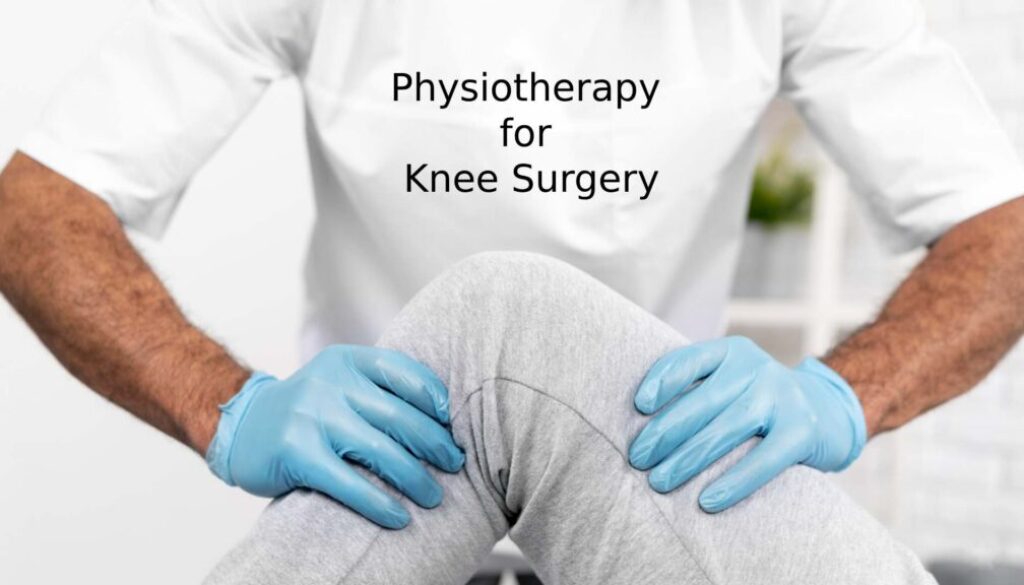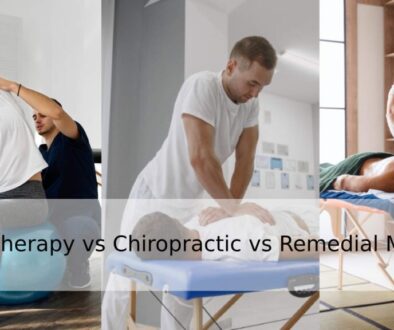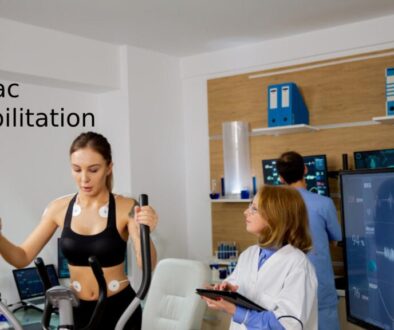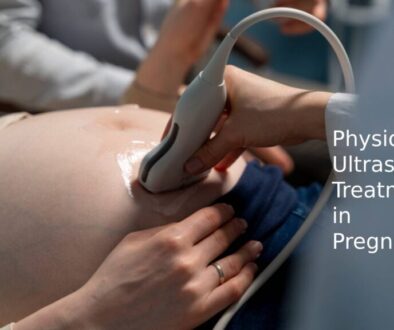Physiotherapy for Knee Surgery: A Complete Recovery Guide
Introduction to Knee Surgery Rehabilitation
Why Physiotherapy is Essential After Knee Surgery
Recovering from knee surgery isn’t just about resting and waiting for your body to heal—it’s an active process that demands strategic rehabilitation. And that’s where physiotherapy becomes your best ally. Whether you’ve undergone a total knee replacement, ACL reconstruction, or meniscus repair, physiotherapy helps rebuild strength, restore range of motion, reduce swelling, and minimize pain.
Without proper physiotherapy, scar tissue can form, joints can stiffen, and the risk of complications increases dramatically. Most patients don’t realize that skipping or delaying physiotherapy can actually prolong the recovery process, sometimes by months. Physiotherapists guide you through every step, from getting out of bed safely in the hospital to climbing stairs with ease at home. They understand the intricacies of healing tissues, and their tailored programs are the difference between limping and walking confidently again.
The goal of post-operative physiotherapy isn’t just healing—it’s regaining function and getting you back to the life you love, whether that’s jogging in the park, chasing after your kids, or returning to competitive sports.
Common Types of Knee Surgeries That Require Physiotherapy
Knee surgery comes in many forms, and physiotherapy plays a role in nearly all of them. Here are some of the most common:
- Total Knee Replacement (TKR): A major surgery that replaces the joint with an artificial implant. Recovery requires long-term physiotherapy for mobility and strength.
- ACL Reconstruction: Common among athletes, this surgery repairs a torn anterior cruciate ligament. Physio is vital to restore balance, and proprioception, and prevent re-injury.
- Meniscus Repair or Removal: Whether it’s a partial meniscectomy or a stitched repair, rehab ensures that the knee regains full function without recurring pain.
- Patellar Realignment: In cases of kneecap dislocation or mal tracking, physiotherapy helps retrain surrounding muscles for proper joint alignment.
- Cartilage Restoration Procedures: Surgeries like microfracture or osteochondral grafting demand a carefully staged rehab to protect the healing cartilage.
Each of these surgeries has a different recovery timeline and set of exercises, which is why having a physiotherapist guiding you is non-negotiable. A one-size-fits-all approach simply doesn’t work when it comes to knee recovery.
Understanding the Role of a Physiotherapist
Personalized Rehab Plans and Assessments
No two knees—and no two patients—are exactly alike. That’s why physiotherapists don’t just follow a generic protocol. They evaluate your condition based on multiple factors like your age, fitness level, type of surgery, and overall health to craft a personalized rehab plan. During the first few sessions, your physio will assess:
- Your walking gait
- Muscle strength
- Joint flexibility
- Swelling and inflammation
- Pain levels and tolerance
- Ability to perform basic tasks like standing, sitting, and climbing stairs
Based on this, they map out a plan that evolves week by week. For example, in the early days, the focus might be on pain control and light mobility work. Later, it shifts to muscle strengthening and functional training. This adaptive approach is what makes physiotherapy so effective—because your body’s healing isn’t linear, and your therapy shouldn’t be either.
Monitoring Progress and Adjustments During Recovery
Progress in physiotherapy is rarely a straight line. Some days you’ll feel great, other days you might feel like you’re going backward. That’s normal. Your physiotherapist plays a crucial role in identifying these fluctuations and tweaking your rehab program accordingly.
They use tools like goniometers to measure your joint angles, dynamometers for muscle strength, and regular functional tests to evaluate your ability to do everyday activities. They’ll also look out for signs of overuse or complications like swelling, joint locking, or unusual pain—issues that could signal the need for medical attention.
In many cases, physiotherapists collaborate with surgeons and physicians to ensure your recovery stays on track. They might increase your workload if you’re progressing quickly or slow things down to avoid setbacks. This level of professional oversight is one of the biggest advantages of guided physiotherapy.
Phases of Post-Knee Surgery Rehabilitation
Immediate Post-Operative Phase (0–2 Weeks)
This phase kicks off right after surgery, often in the hospital itself. The main goals here are reducing pain and swelling, preventing complications, and beginning very gentle mobility. You’ll likely begin:
- Ankle pumps and circles: To improve circulation and prevent blood clots.
- Isometric quadriceps contractions: To prevent muscle wasting.
- Passive range of motion: Either manually or with a machine like a CPM (Continuous Passive Motion) device.
Weight-bearing status varies depending on the surgery, but even if you’re allowed to walk, it’s usually with the help of a walker or crutches. Pain management is also essential during this period—not just with medications, but with ice packs, elevation, and gentle movement to encourage fluid drainage.
Your physiotherapist may visit you in the hospital to show you how to move safely in bed, get up without stressing your knee, and use walking aids correctly. You’ll also learn basic do’s and don’ts to protect your knee during these critical first days.
Early Rehabilitation Phase (2–6 Weeks)
Once you’re back home or attending outpatient sessions, the focus shifts to regaining mobility and activating muscles that have gone dormant. Your physiotherapist will introduce:
- Heel slides and wall-assisted knee bends: To restore range of motion.
- Straight leg raises: To rebuild strength in the quadriceps.
- Glute bridges and side-lying hip abductions: To engage the supporting muscles around the knee.
During this phase, swelling should gradually decrease, and pain levels should improve. You’ll work toward bending your knee to at least 90 degrees and extending it fully. Balance training may begin here too, as regaining proprioception (your sense of joint position) is vital for walking properly and avoiding falls.
Regular sessions help identify any mobility issues early—like tight hamstrings or underactive quads—that could limit your progress. Your physiotherapist might adjust your home exercise plan weekly to keep you on the path to full recovery.
Strengthening and Mobility Phase (6–12 Weeks)
At this stage, your knee is starting to feel more stable, and it’s time to challenge it a little more. You’ll transition from basic recovery exercises to more dynamic strengthening and mobility work. The goal here is to restore full range of motion, increase strength in key muscle groups, and prepare your knee for more demanding tasks like walking long distances, light jogging, or climbing stairs.
Key exercises during this phase include:
- Stationary biking: Improves endurance and knee flexibility with low impact.
- Mini-squats and lunges: Help build quadriceps, hamstrings, and glutes strength.
- Step-ups on a low platform: Great for mimicking daily movements like climbing stairs.
- Resistance band training: Targets hip and knee stabilizers.
Balance and proprioception drills become more advanced—think of single-leg stands, use of a BOSU ball, or light agility work for athletes. Your physiotherapist might also include gait correction exercises if you’re still limping or favoring one side.
This is also when pain should be minimal or gone. If you’re still experiencing significant discomfort, it’s a red flag that your program might need to be reevaluated. It’s crucial to communicate openly with your physiotherapist during this period, as overexerting yourself could cause setbacks.
Return to Normal Activities and Sports (3+ Months)
For many, this is the most exciting—and sometimes nerve-wracking—phase of recovery. The idea of getting back to work, sports, or other hobbies can be thrilling, but it has to be done carefully. This phase focuses on reconditioning your body for the activities that matter most to you.
Physiotherapy at this point may include:
- Sport-specific drills (for athletes): Jump training, cutting, pivoting, and quick direction changes.
- Advanced strength work: Deadlifts, weighted squats, and step-downs.
- Endurance training: Gradual increase in walking, running, or biking distances.
- Plyometrics: Box jumps, hop drills, and jump rope to rebuild explosive power.
Clearance to return to sports or heavy work isn’t just based on time—it’s based on meeting certain physical milestones. That includes having 90% or more strength compared to your uninjured leg, full range of motion, and no pain during activity.
Your physiotherapist will guide you through this return-to-play protocol safely, often working in collaboration with a sports physician or orthopedic surgeon. Skipping steps or pushing too fast can undo months of progress, so it’s best to stay patient and focused.
Key Physiotherapy Techniques Used in Knee Rehab
Manual Therapy Techniques
Hands-on techniques, or manual therapy, are a staple of knee rehabilitation. These are movements performed by your physiotherapist to help loosen tight tissues, break down scar tissue, and improve joint mobility. Manual therapy isn’t passive massage—it’s active and functional.
Some popular manual techniques include:
- Joint mobilizations: Gentle oscillating movements to restore normal knee mechanics.
- Soft tissue mobilization: To release tension in tight muscles like the IT band or quadriceps.
- Myofascial release: Reduces restrictions in the connective tissue that can limit motion.
These therapies are especially helpful in the early and mid-stages of recovery. They help improve circulation, reduce inflammation, and allow you to move more freely. When combined with exercise, manual therapy significantly boosts your outcomes.
Manual therapy also builds trust and rapport between you and your physiotherapist. Many patients find that these sessions help them relax, improve confidence, and even reduce fear associated with movement.
Exercise Therapy and Strengthening
Exercise therapy is the cornerstone of knee rehab. While manual techniques get you moving, exercise keeps you moving. A tailored plan will strengthen not only the knee but also supporting muscles like your glutes, calves, and core.
Exercises typically include:
- Isometric holds to activate muscles without movement
- Dynamic stretches to improve flexibility
- Resistance training using bands, weights, or machines
- Functional drills like sit-to-stand, squats, or step-ups
Your physio will adjust the frequency, intensity, and type of exercise based on your stage of healing. In early stages, bodyweight exercises are the norm. Later, you might transition to gym equipment or weighted movements.
Consistency is key. Doing your home program as prescribed can accelerate healing, while missing sessions can lead to plateaus or regression. Aim to treat exercise like a non-negotiable part of your recovery—just like taking your medication.
Range of Motion and Flexibility Work
Getting your knee to bend and straighten fully again is one of the biggest hurdles after surgery. Even a few degrees of lost motion can throw off your gait and cause long-term issues. That’s why improving your range of motion is a critical focus in every phase of physiotherapy.
Techniques and tools used to improve ROM include:
- Passive and active-assisted stretchingCPM (Continuous Passive Motion) machines
- Stretching bands and foam rollers
- Wall slides and heel props
Patients recovering from procedures like total knee replacement often struggle with knee flexion (bending). Hitting the 90-degree mark by week 2–3 and progressing to 120+ degrees is often a milestone. Extension (straightening the leg) is equally important to avoid limping or dragging your foot.
Your physiotherapist will track these numbers closely and coach you through stretches and exercises that help improve flexibility safely. They’ll also educate you on how often to stretch, how long to hold each position, and how to avoid overstretching, which can do more harm than good.
Use of Modalities: Ice, Heat, TENS, and Ultrasound
In addition to movement and exercise, physiotherapists often use various modalities to ease pain, reduce inflammation, and improve tissue healing. These tools can be used in clinic or at home, depending on availability.
Common modalities include:
- Ice therapy (cryotherapy): Helps control post-surgery swelling and numbs pain.
- Heat therapy: Increases blood flow, making muscles more pliable for stretching.
- TENS (Transcutaneous Electrical Nerve Stimulation): Uses low-voltage electrical currents to interrupt pain signals.
- Ultrasound therapy: Sends sound waves deep into tissues to promote circulation and healing.
While these modalities aren’t a replacement for exercise, they’re excellent adjuncts. For instance, applying heat before stretching can make the joint more receptive, while ice after a workout can help minimize swelling. Your physiotherapist will guide you on how to use these tools effectively, including how long to apply them and how often.
Home-Based vs. Clinic-Based Physiotherapy
Pros and Cons of Each Setting
When it comes to knee surgery rehabilitation, one big decision you’ll face is whether to continue physiotherapy at home or in a clinic. Both have their own set of pros and cons, and often, the best approach is a combination of both.
Clinic-Based Physiotherapy Pros:
- Access to professional equipment and tools like treadmills, balance boards, and resistance machines.
- Supervised sessions ensure proper form and technique.
- On-the-spot feedback and adjustments to your program.
- Opportunity to progress faster under expert guidance.
Clinic-Based Physiotherapy Cons:
- May require transportation, which can be challenging post-surgery.
- More expensive, especially if not fully covered by insurance.
- Rigid appointment schedules might be hard to accommodate.
Home-Based Physiotherapy Pros:
- Convenient—you don’t need to leave the house.
- Encourages independence and routine building.
- Cost-effective, especially for long-term rehab.
- Flexible timing lets you fit exercises into your daily life.
Home-Based Physiotherapy Cons:
- Limited access to equipment and professional supervision.
- Higher risk of performing exercises incorrectly.
- Motivation can wane without external accountability.
Ultimately, your physiotherapist can help decide when it’s best to transition from clinic to home-based rehab. Many patients start in a clinic and then continue with a home program once they’re confident with the exercises and able to self-manage effectively.
How to Maximize Results from Home Exercises
Getting the most out of your home physiotherapy program isn’t about doing more—it’s about doing it right. Too often, people rush through exercises or skip them altogether, not realizing that consistency is the real key to success.
Tips to maximize your home rehab:
- Stick to a schedule: Set specific times each day for your sessions.
- Follow instructions closely: Watch video demos or ask for detailed handouts from your physio.
- Track your progress: Use a notebook or app to log reps, sets, and pain levels.
- Use visual reminders: Place sticky notes or set phone alarms so you don’t forget to exercise.
- Create a comfortable space: Use a yoga mat, proper shoes, and clear space to avoid injury.
Don’t be afraid to reach out to your physiotherapist if you’re unsure about anything. A quick video call can correct your form or update your plan. Rehab doesn’t stop when you leave the clinic—what you do at home makes all the difference.
Preventing Complications Through Physiotherapy
Blood Clots, Stiffness, and Muscle Atrophy
One of the most overlooked benefits of physiotherapy is its role in preventing serious post-surgical complications. Left unchecked, issues like blood clots, joint stiffness, and muscle atrophy can derail your recovery.
Blood clots, or deep vein thrombosis (DVT), are a real concern after knee surgery. The lack of movement reduces circulation, increasing clot risk. Simple leg movements, ankle pumps, and early mobilization—guided by your physio—dramatically reduce this risk.
Joint stiffness often sets in when rehab is delayed or insufficient. Scar tissue forms quickly, and without daily stretching and movement, your knee can become “frozen” in a bent or straight position. Physiotherapy ensures that your knee maintains—or regains—its full range of motion.
Muscle atrophy is another big problem. The quadriceps and hamstrings can weaken rapidly after surgery. A well-structured strengthening program reverses this and helps protect your new joint from future injury.
Your physiotherapist doesn’t just help you heal—they actively prevent complications before they arise, keeping your recovery safe, smooth, and steady.
How Physiotherapy Minimizes Surgical Risks
Physiotherapy is more than just exercise; it’s preventive medicine. Every movement, stretch, and strengthening drill is designed to lower your risk of post-op complications and long-term joint issues.
Here’s how physio helps mitigate risks:
- Improves blood circulation to reduce the chance of clot formation.
- Promotes lymphatic drainage to reduce swelling and inflammation.
- Reduces dependence on pain meds by naturally managing discomfort through movement.
- Corrects posture and gait to avoid imbalances that could lead to hip or back issues.
- Builds joint stability to prevent falls and re-injury.
The truth is, skipping physiotherapy is like leaving your knee half-treated. The surgery may fix the mechanical problem, but without rehab, you’re at high risk for setbacks that could send you right back to the operating table.
Nutritional and Lifestyle Support for Recovery
Diet to Support Healing
You’ve probably heard the phrase “you are what you eat”—and when it comes to post-surgery recovery, it couldn’t be more accurate. A nutrient-rich diet can significantly enhance healing, reduce inflammation, and support muscle growth as you go through physiotherapy.
Key nutrients for recovery:
- Protein: Essential for tissue repair and muscle rebuilding. Aim for lean meats, eggs, dairy, legumes, and protein shakes.
- Vitamin C: Supports collagen formation and immune function. Found in citrus fruits, bell peppers, and leafy greens.
- Zinc: Crucial for wound healing. Found in nuts, seeds, and seafood.
- Calcium and Vitamin D: Important for bone strength. Found in dairy, fish, and fortified foods.
Hydration is equally important. Drinking enough water helps flush toxins, supports joint lubrication, and improves energy levels during rehab. Try to avoid processed foods, excess sugar, and alcohol, which can cause inflammation and slow healing.
Eating right doesn’t just help your body—it boosts your mood, sharpens your focus, and gives you the stamina to stick with your physiotherapy program.
Importance of Sleep and Stress Management
Recovery isn’t just physical—it’s mental, emotional, and psychological. If you’re not sleeping well or constantly stressed, your body won’t heal as effectively. Sleep is when your muscles repair, your immune system strengthens, and your energy is restored.
Tips for better post-surgery sleep:
- Elevate your leg slightly to reduce swelling.
- Use pillows to support your body and relieve pressure.
- Avoid caffeine and screens before bed.
- Create a calming nighttime routine.
Stress, on the other hand, triggers hormones like cortisol that can increase inflammation and slow healing. Try incorporating:
- Meditation or deep breathing: Just 10 minutes a day can lower stress.
- Journaling or gratitude practice: Helps you focus on progress.
- Light activity: Gentle walking or stretching can lift your mood.
Your physiotherapist might even recommend resources for stress reduction as part of your recovery plan. Remember, healing is a whole-body process. The mind and body need to be in sync for your knee to come back stronger than ever.
Common Challenges and How to Overcome Them
Every recovery journey comes with its own set of obstacles. The good news? Most challenges can be managed with the right strategies and support.
Pain and stiffness are common early on. Don’t let this discourage you—movement often helps more than rest. Your physiotherapist will show you how to work with pain, not against it.
Motivation loss is another big one. Rehab can feel slow, especially when progress stalls. Setting short-term goals, tracking your improvements, and celebrating small wins can help keep your spirits up.
Fear of re-injury is real—especially for athletes. You might hesitate to push yourself, worried about undoing your progress. This is where guided, progressive physiotherapy makes all the difference. It ensures you build confidence along with strength.
Lack of support at home can make recovery lonely. Don’t hesitate to involve family or friends—whether it’s for encouragement, assistance, or just someone to talk to after a tough session.
Remember, challenges are a normal part of healing. You’re not failing—you’re learning how to rebuild. And your physiotherapist is there every step of the way.
When to Contact Your Physiotherapist or Surgeon
Knowing when to pick up the phone and call your healthcare provider can make or break your recovery. While some discomfort and swelling are expected, certain signs shouldn’t be ignored.
Contact your physiotherapist if:
- Pain increases suddenly or becomes unmanageable.
- Swelling worsens despite rest and icing.
- You can’t perform an exercise you previously managed.
- You feel like you’re regressing instead of progressing.
Contact your surgeon immediately if:
- You notice signs of infection—redness, warmth, fever, or oozing at the incision.
- You develop chest pain, shortness of breath, or leg swelling (possible blood clot).
- You experience sudden joint locking or giving way.
- You’re unable to bear weight or move the knee at all.
Trust your instincts. If something feels off, say something. Your healthcare team would rather check something minor than miss something major. Quick action can prevent complications and keep your recovery on track.
Cost and Insurance Considerations for Knee Rehab
Let’s talk about money—because physiotherapy, while essential, isn’t always cheap. Understanding your insurance and cost options can help you plan your recovery without financial stress.
Clinic-Based Physiotherapy Costs:
- Packages or bulk sessions might offer discounts.
- Out-of-pocket costs depend on your insurance deductible and coverage.
Insurance Tips:
- Check how many physio sessions are covered annually.
- Ask if pre-authorization is needed.
- See if telehealth or home visits are included.
Affordable Rehab Alternatives:
- Community health clinics or university programs.
- Digital apps with physiotherapist-led routines.
- Combining in-clinic and home-based sessions to cut costs.
Even if you’re on a tight budget, skipping physio can lead to more expensive problems down the road. Think of rehab as an investment in your long-term mobility and quality of life.
Final Tips for a Faster, Safer Recovery
Let’s wrap things up with some golden rules to make your knee recovery smoother and faster:
- Stay consistent: Skipping exercises, even for a few days, can set you back.
- Listen to your body: Pain is a guide—not an enemy. Work through discomfort, not sharp pain.
- Communicate openly: Keep your physio updated on how you’re feeling.
- Set goals: Whether it’s walking unassisted or climbing stairs, milestones keep you motivated.
- Celebrate progress: Even the small wins matter. Each step is a step forward.
Recovery from knee surgery is a journey, not a sprint. With the right physiotherapy, a strong mindset, and a little patience, you’ll not only recover—you’ll thrive.
Conclusion
Physiotherapy is the bridge between knee surgery and full recovery. It’s the structured, personalized roadmap that takes you from pain and immobility to strength and freedom. Skipping it or rushing through it doesn’t just delay healing—it risks the success of your surgery altogether.
Whether you’re recovering from a total knee replacement, an ACL repair, or anything in between, your physiotherapist is your partner in progress. They bring expertise, accountability, and encouragement when you need it most.
Commit to the process. Embrace every step. Because with the right rehab, your best days aren’t behind you—they’re just beginning.



